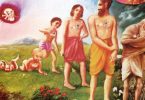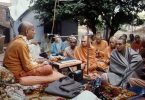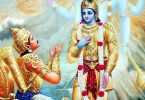Question: How to understand the strong negative emotions of Lord Caitanya and his associates – like Gadadhar Pandit, Raghunatha das Gosvami, King Prataparudra, Sanatana Gosvami when he was being ‘examined’ by Caitanya Mahaprabhu, etc.? It all seems very painful!
Answer by Romapada Swami:
Bhakti Rasamrita Sindhu||2.5.109||
Translation: In separation, this rati develops its full form of rasa in astonishing bliss, and since it does not give up this form at all, any suffering is an appearance only.
Jīva Gosvāmī’s Commentary
But how will these devotees experience rasa in the pain of separation, since rasa should be most blissful? This verse answers. It is a transformation of astonishing bliss because it is the essence of the highest bliss, and because it has its cause in Bhagavān who is the source of all bliss. It is called only an appearance of the greatest suffering because there is a superimposition of suffering on rati, caused by awareness of separation from the Lord. This suffering acts as a cause for further rati. As well, it disappears with the hope of attaining Kṛṣṇa permanently. Vivarta (transformation) here means that the rasa develops its full form. The cause of rati not giving up its nature is mentioned: it is ūrjitā (strong). Because the rati (attraction for the Lord) is strong, it does not give up hope of attaining Kṛṣṇa. It is not possible for it to do so. This is illustrated in Bhāgavatam.
āśā hi paramaṁ duḥkhaṁ nairāśyaṁ paramaṁsukham
yathā sañchidya kāntāśāṁ sukhaṁ suṣvāpa piṅgalā
Material desire is undoubtedly the cause of the greatest unhappiness, and freedom from such desire is the cause of the greatest happiness. Therefore, completely cutting off her desire to enjoy so-called lovers, Piṅgalā very happily went to sleep. SB 11.8.44
paraṁ saukhyaṁ hi nairāśyaṁ svairiṇy apy āha piṅgalā
taj jānatīnāṁ naḥ kṛṣṇe tathāpy āśā duratyayā
Indeed, the greatest happiness is to renounce all desires, as even the prostitute Piṅgalā has declared. Yet even though we know this, we cannot give up our hopes of attaining Kṛṣṇa. SB 10.47.47
Bhakti Rasamrita Sindhu||2.5.116||
Translation: Gauṇa-rasa (Secondary Rasa):
There are seven secondary rasas: hāsya (humor), adbhuta (astonishment), vīra (enthusiasm), karuṇa (lamentation), raudra (anger), bhayānaka (fear) and bībhatsa (disgust).
Bhakti Rasamrita Sindhu||2.5.123||
Translation: Though the completely ignorant people and those with mistaken knowledge think immediately that rasas such as karuṇa are full of grief, those persons with knowledge of rasa say that these rasas are full of profound bliss.
Jīva Gosvāmī’s Commentary
There are five types of people to consider: those who experience rasa (bhāvya-bhakta), those who experience the stage of bhāva (bhāvaka-bhaka), those who understand about rasa (prājña) intellectually, those who are mistaken about rasa (ajña), and those who know nothing about rasa (grāmya). Some persons have the following worry. “Bliss in rasa can be perceived in separation only to the extent that rasa has already been fixed in the person. When karuṇa, bhayānaka and bībhatsa rasas function by themselves, happiness cannot be perceived at all. Thus, for the devotees who are assistants in the Lord’s pastimes (bhāvya-bhaktas) (in whom rasa is fixed), grief is always dependent upon that rasa whose very nature is bliss. For instance, at the time of karuṇa-rasa or lamentation, sorrow is experienced because of separation from the Lord by obstacles to their hope of attaining the Lord. There is a feeling of sorrow in bhayānaka-rasa when one is afflicted by fear of obstacles to one’s aspirations to meet Him. There is feeling of sorrow in bībhatsa-rasa when one’s experience of the most charming Kṛṣṇa is obstructed by disgusting objects. However, for other devotees, those aspiring for rasa, these rasas of lamentation, fear and disgust can only be distasteful.”
This verse answers the doubt. The ignorant (ajñaiḥ) are those who, though knowledgeable of other scriptures, are not conversant with the scriptures dealing with rasa. They are not able to understand the conclusion that is understood by the devotees whose hearts are inundated with rasa. Those who cannot be distinguished from animals are called grāmyaiḥ. These two types of people immediately conclude by superficial inspection (sapadi) that these rasas give sorrow. However, the rasas of karuṇa, bhayānaka and bībhatsa which are relished by both the bhāvya and bhāvaka devotees, are considered to be full of bliss by those knowledgeable of the conclusions of the scriptures (prājñaiḥ) dealing with rasa, even though those persons cannot directly taste them.
Bhakti Rasamrita Sindhu || 1.2.303||
Visvanatha Cakravartī Ṭhākura’s Commentary
Those gopīs became freed from the material ocean. That means that they became free from the material portions of their bodies. At the time of the rāsa dance when they were locked in their houses, they burned up the material portion of their bodies by the separation from Kṛṣṇa caused by their being locked up. The particular explanation of this can be seen in the commentary [of Viśvanātha] on the Tenth Canto. This is a result which accompanies bhakti.







